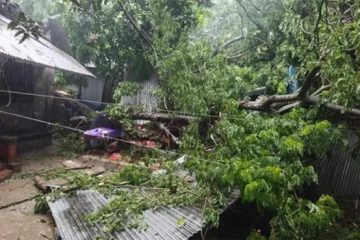Auto- traffic signal proves ineffective
The severe traffic congestion in the city of Dhaka has been continuing despite promise given by Dhaka Metropolitan Police to ease. It is true, hardly there is any city in the world free of traffic jamming, but in the case of Dhaka it is beyond tolerable level.
The installation of auto-traffic signal at a cost of taka 13.80 crore has been proved much ineffective because most of the members of Police posted in the city’s different traffic points use to control movement of vehicles manually.
The higher officials defend their action as saying that the flow of vehicles from all ends being not equal, it becomes necessary to give more time to one end than the other’s for equation.
The argument is partially true because a look into several traffic points viz. Baro Maghbazaar, Bangla Motor, Farm Gate and Kakoli will reveal the fact that manual system does not effectively work all the time, sometimes it gives good result, sometimes it won’t.
And when Police gives more time to one end, the passengers of other end pass some anxious moments.
The office employees fear that they may not be able to reach offices at right time and that they will be marked late, the examinees are scared of not reaching the examination hall in time, and the patients’ relatives become puzzled as to when they will land at hospitals or at the doctor’s private chamber for treatment.
One day a female examinee began weeping as the auto-rickshaw carrying her became stranded at Baro-Maghbazaar for about 15 minutes. It could not be, however, known whether she finally reached her destination in time and answered all questions.
In this backdrop it can be argued that had the auto-traffic signal been allowed to function, every passenger knew his/her doing in that situation.
The main reason of traffic congestion in the city is the defective city planning. Streets and avenues have been constructed in unplanned way with residential buildings and commercial establishments on both sides. The general rule is that no building, private or official, shall be constructed close to street or avenue.
At least there shall be a gap of eight feet so that cars or any other vehicle can be easily parked. But sadly the city of Dhaka lacks in this facilities. As a result, hundreds of cars are parked on streets and avenues hindering movement of all kinds of transports.
Another reason is scanty number of link roads. As for example, a link road between Begunbari (Tejgaon) and Malibagh could reduce the severe jamming of Baro Maghbazaar. Similar examples are applicable for other areas also. Howbeit, the initiative must be taken by Dhaka city Corporation or any other authority as the case may be.
The fifth reason is that the city streets, avenues, lanes and by-lanes cover just 10 percents, instead of standard 25 percents, of the total area of the Dhaka city.
It causes traffic jamming as all transports cannot be accommodated. The sixth reason is the influx of private cars. According to a report, of the total vehicles plying on city, 80 percents are private and official cars. As a result, buses and minibuses cannot find their ways easily.
In this regard it is necessary to point out that level crossings have no contribution to the traffic jamming although the friends of bus owners try to blame them.
There is no city in the world but railway line. So instead of becoming utopian, it is better to be practical that the traffic congestion may be reduced to a great extent.




















